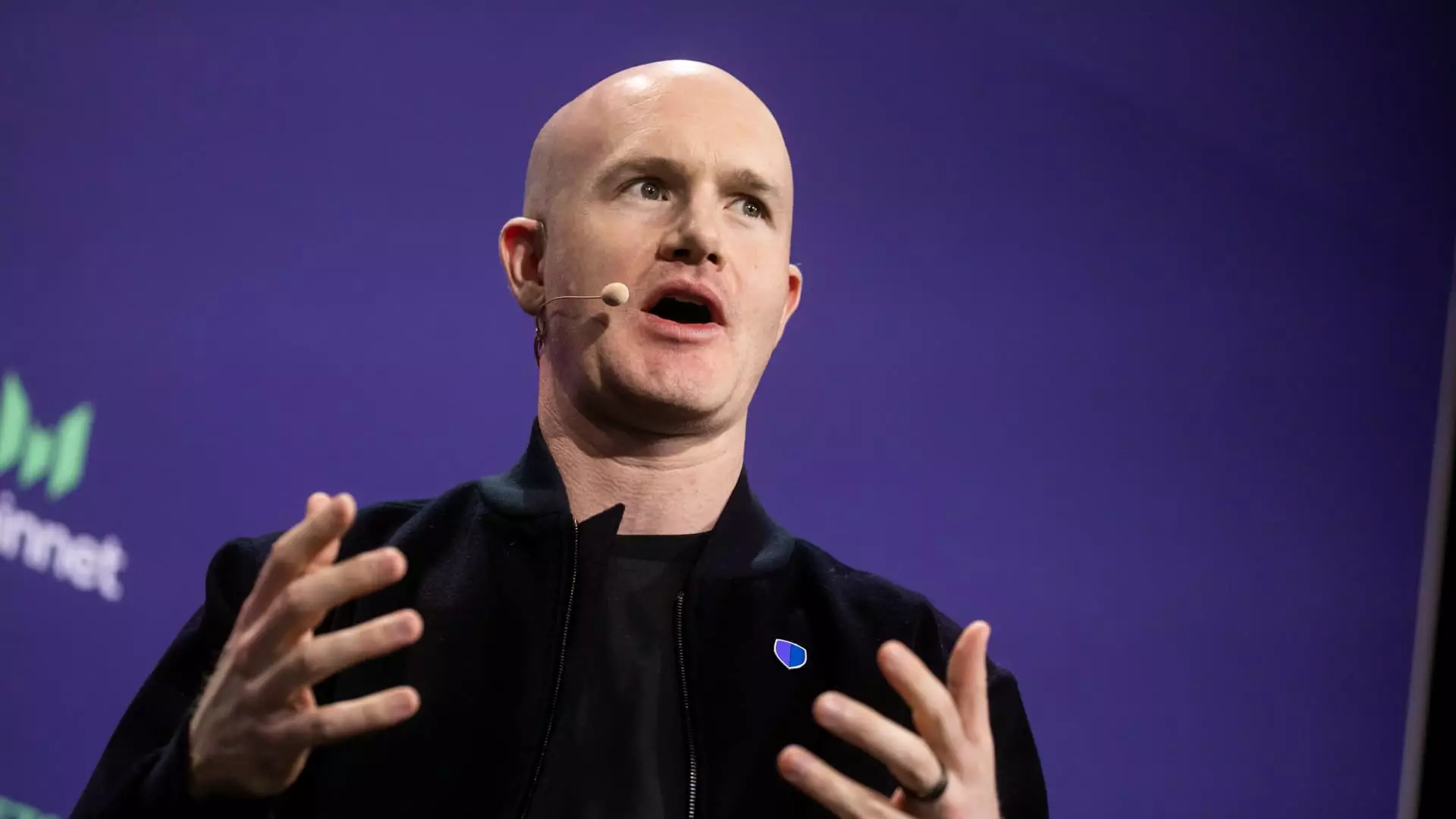In the ever-evolving landscape of financial technology, Coinbase’s CEO, Brian Armstrong, has painted an audacious vision for the cryptocurrency platform. His recent assertions reveal an ambition that goes far beyond trading tokens; he envisions Coinbase emerging as a dominant force in global financial services within the next decade. This is no mere statement but a clarion call as the realm of finance finds itself at a crossroads, one that could redefine how individuals and institutions interact with money, assets, and value.
Armstrong’s forward-thinking philosophy is particularly striking. He emphasizes a pivot from a past steeped in traditional financial systems towards an innovative future ripe for disruption. The idea that “crypto is eating financial services” speaks not only to a trend but to an inevitable shift, where digital assets seamlessly integrate with existing services. In a world increasingly governed by blockchain protocols, his enthusiasm for “skating to where the puck is going,” as he puts it, suggests a proactive adaptation to change, something many legacy institutions struggle to grasp.
Growing Influence of Traditional Financial Players
Coinbase’s aspirations are buoyed significantly by a notable shift among traditional financial institutions showing increased interest in the crypto economy. The recent actions by the Office of the Comptroller of the Currency (OCC), alongside the Federal Reserve and FDIC, dismantling previous barriers to crypto engagement, reflect an undeniable transformation. This returns us to the premise that we are witnessing a rare confluence of regulatory acceptance and technological advancement that favors rapid growth in crypto penetration.
Still, it raises the question: can Coinbase genuinely capitalize on this newfound liberalization? Armstrong’s optimism hinges on the belief that even the most conservative banks will eventually embrace crypto solutions. His assertion implies that banks acknowledge the limitations of outdated models amidst a rising tide of digital efficiency. However, there remains a specter of skepticism. The financial industry is notoriously resistant to rapid change, and the willingness of banks to truly transform their models may not align with Armstrong’s bright projections.
The Stablecoin Strategy: A Double-Edged Sword
One of the most interesting aspects of Armstrong’s outlook is his focus on stablecoins, particularly USDC, as a linchpin in Coinbase’s strategy. The explosive revenue growth Coinbase has experienced from stablecoin-related services underscores his assertion that they are a key driver of the platform’s profitability. Armstrong argues that continued partnerships with traditional banking solutions could enhance the adoption and utility of USDC, potentially positioning it as the preeminent stablecoin in the market.
However, the idea that stablecoins leverage network effects complicates this narrative. While Armstrong critiqued banks creating their own versions of stablecoins, viewing it as redundant, the reality is that every institution has a distinct risk appetite and operational preference. Will banks heed his advice and unify under a shared standard, or pursue self-interested initiatives that fragment the market further? The outcome remains uncertain, shrouded in the complexities of corporate strategies and competitive positioning.
Challenges Ahead: Regulatory and Market Uncertainty
As Coinbase strides confidently into this uncharted territory, it does so against a backdrop of regulatory uncertainty that looms large over the whole industry. While recent developments reflect a more favorable environment for crypto, anecdotes of regulatory pushback and tightening rules are not far removed from the minds of executives. Armstrong’s comments about loosening regulations under the Trump administration suggest an optimism, yet this very political landscape can be a fickle ally, complicating long-term planning and strategy.
Moreover, as the market matures, competition will grow fiercer, and the cavalry of traditional financial institutions may not be sufficient to protect Coinbase from inevitable disruptions from emerging technologies and new players. As the sector grows, so too will the sophistication and power of incumbents looking to reclaim market share, potentially threatening the very foundation of Coinbase’s ambitions.
In a digital age rife with opportunities, Armstrong’s vision for Coinbase could very well redefine our relationship with money and assets. Yet, as Coinbase seeks to establish itself as the go-to financial services app, it will be essential to navigate a complex web of existing financial systems, regulatory hurdles, and market fluctuations, all while upholding the pioneering spirit that was once the heart of cryptocurrency. The future may be bright, but it is certainly fraught with challenges.

